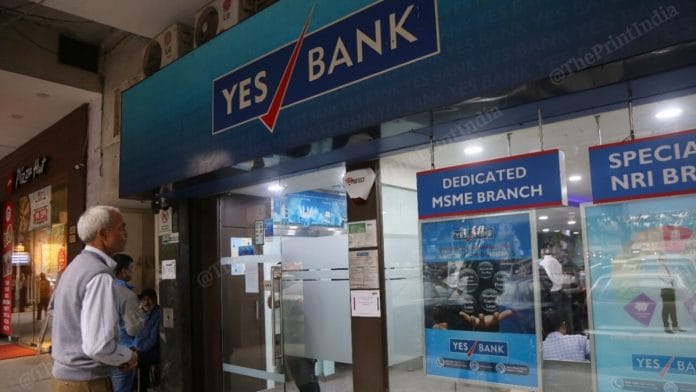The saga of the Additional Tier-1 (AT1) bonds continues. It started with Yes Bank selling these bonds to retail investors as high-interest yielding fixed-deposits, what followed was a chain of events in early 2020 — the bank getting into trouble because of bad loans, the RBI-appointed administrator writing them off, the bondholders suing in court, the Bombay High Court setting aside the write-off decision, and the case now likely to go to the Supreme Court.
This series of events illuminates the different ways in which financial regulation in India is broken.
The Yes Bank saga
In 2016 and 2017, Yes Bank issued AT1 bonds to increase its capital base. The bonds provide higher yields than other comparable bonds.
The catch? In case of a crisis, they can be converted to equity, or even be written off. That is, if you purchased these bonds, you would get a higher interest rate (than say a fixed deposit), but in the event that the bank got into trouble, there was a chance that you wouldn’t be paid interest, or your bonds would get converted to equity.
By March 2020 it was public knowledge that Yes Bank was in financial trouble owing to some of its loans becoming Non-Performing Assets (NPAs). The RBI appointed an administrator to deal with the bank’s solvency, superseding the Board.
The administrator put in place a scheme for its revival — State Bank of India along with some other financial institutions would purchase equity, while AT1 bondholders would get nothing.
Also Read: Growth of India’s NBFCs means more compliances, regulations. Go digital to keep track
Mis-selling of bonds
The first problem is the marketing pitch for the bonds. It is alleged that Yes Bank employees overemphasised the returns, and downplayed the risks of investing in these bonds.
Mis-selling by bank employees is not new. They have been known to recommend the highest fee-paying product, and rarely disclose costs and lock-ins. Consumer protection regulation by the RBI has yet to mount a comprehensive response to such practices.
In the case of Yes Bank, SEBI (Securities and Exchange Board of India) imposed a penalty on Rana Kapoor, the managing director of the bank for mis-selling. It further restricted retail investors from investing in these bonds.
In typical Indian style, we have not solved the systemic problem behind mis-selling, but just banned retail investors from investing altogether. This presumes that retail investors are dumb, and cannot make risk-return trade-offs once relevant disclosures are made. The decision means that banks are deprived of a source of funds and retail investors are deprived of a source of high interest-yielding instruments. There is little change in the distribution practices of frontline employees.
Also Read: Think twice before tax fraud, the authorities are on to you with AI
Resolution of Yes Bank
The second problem of regulation is the delay and the unpredictability around how the regulator deals with failing banks. In the case of Yes Bank, underreporting of bad loans was seen as early as FY16.
By 2019, credit rating agencies had downgraded the bank, and its market value had eroded. The moratorium, however, got placed only on 5 March 2020. Significant time was lost.
As has been discussed elsewhere, there is an inherent conflict of interest in the role of the RBI as a regulator of banks, and as a resolution authority. There has been no consistency in the manner in which bank failures have been resolved in the past. Sometimes they were sold to private equity funds, sometimes merged with other public sector banks, and sometimes bonds were wiped out.
This demonstrates the absence of a framework lack of regulatory clarity in the resolution of financial firms. The government’s withdrawal of the Financial Resolution and Deposit Insurance (FRDI) Bill in 2018 is another example of a lost opportunity to reform India’s financial sector.
Also Read: Indian taxpayers are ‘dragged’ into paying higher income tax. Govt must factor in inflation
The debt write-off
The third and perhaps the biggest problem revolves around writing off debt over equity.
The Basel III norms that guide banking regulators suggest that AT1-type bonds will be junior to all other debt, but senior to common equity capital of the bank. This is a reiteration of how finance works.
Equity holders get the upside if the firm does well but stand to lose their capital if it fails. Debt holders do not get the upside, but get paid before equity in the event of bankruptcy. This logic was turned on its head in the Yes Bank case.
Technically, the RBI may be able to refer to the master circular to justify the decision of the administrator. But the larger question is whether there was merit in challenging the provision that goes against the logic of how debt and equity work.
The ability of the administrator to write off debt before equity essentially meant that most institutional investors will be reluctant to invest in these bonds, leading to another important source of capital for banks drying up because basic principles of finance were disregarded.
Renuka Sane is research director at Trustbridge, which works on improving the rule of law for better economic outcomes for India. Views are personal.
(Edited by Theres Sudeep)






